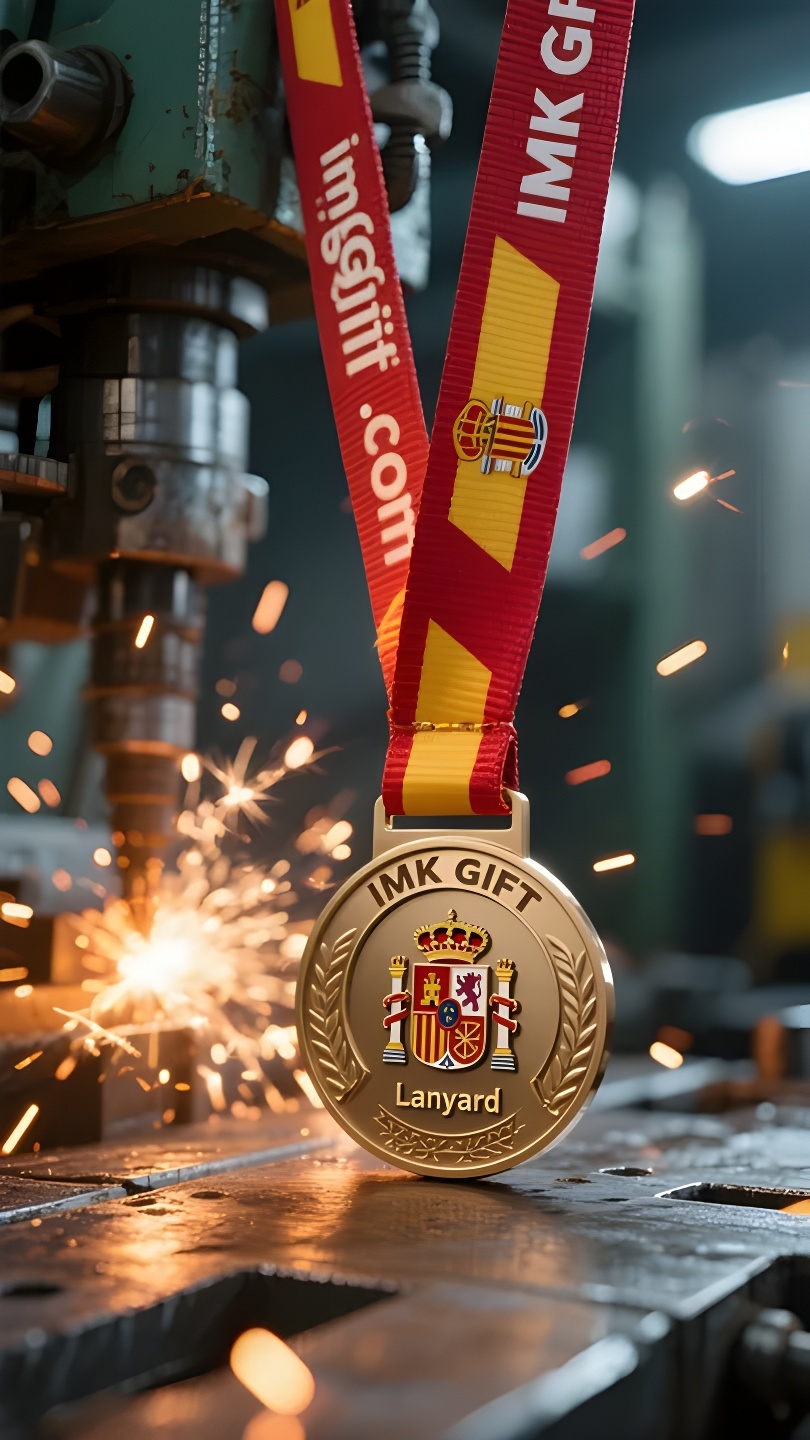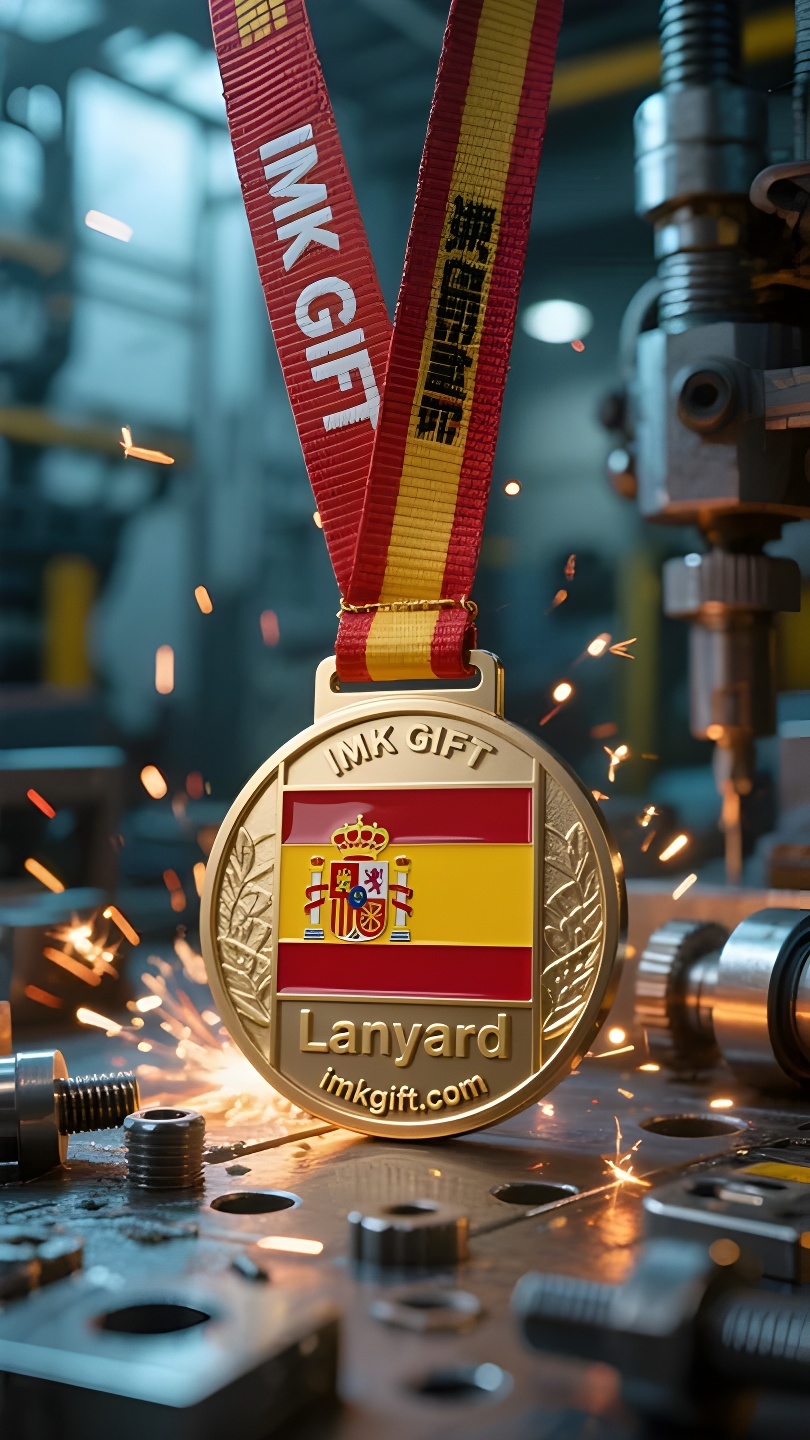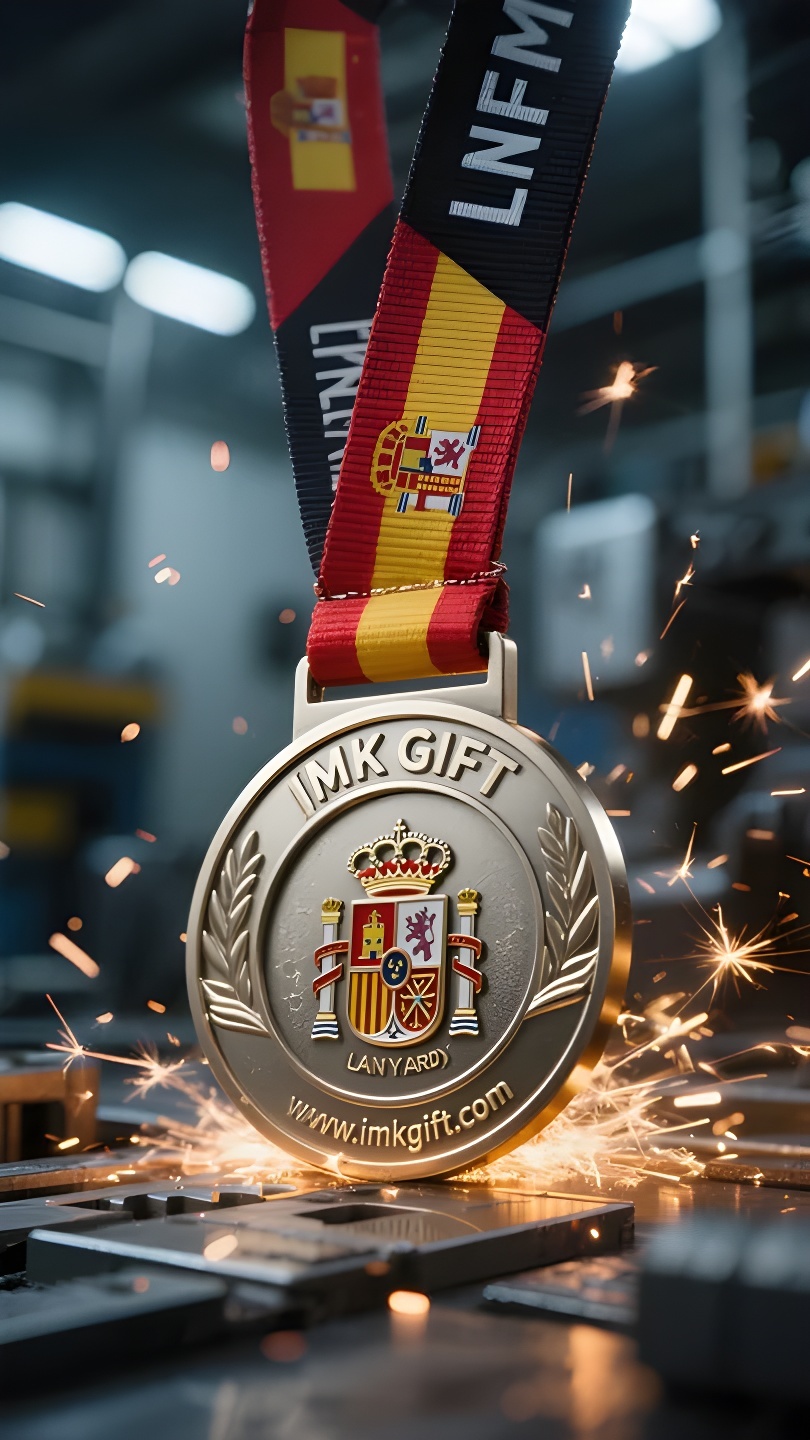in996-Vínculo-de-Gloria-Cuerda-de-Fe-Entrelazada-Roja-y-Amarilla
▼
Cada 12 de octubre, las banderas nacionales rojas y amarillas ondean al viento en las calles de España, y el castillo dorado y el león rojo del escudo nacional brillan bajo el sol. Este “Día de España”, que conmemora el viaje de Colón, no solo es un eco de la historia, sino que también contiene un código espiritual que inspira a la gente contemporánea: esos cordones trenzados atados a las medallas expresan el profundo significado de la conexión sanguínea entre los luchadores y la patria. El cordón de la bandera española utiliza un proceso de tejido bicolor rojo y amarillo, un diseño no casual. El rojo simboliza la sangre de los guerreros y el amarillo la fertilidad de la tierra. Cuando aparecen en la ceremonia de entrega de premios, entrelazados en urdimbre y trama, se convierten en el vínculo que conecta la gloria personal con el espíritu colectivo. En el estadio olímpico, cuando los atletas lucen medallas con cordones rojos y amarillos en el podio, cada hilo de seda encarna la valentía de un torero que nunca se rinde y narra el apasionado ritmo vital de una bailaora de flamenco. El proceso de enrollado del cordón del emblema nacional con hilo dorado es aún más profundo. Los cuatro nudos con diferentes patrones corresponden a la fusión de civilizaciones de los cuatro antiguos reinos de Castilla, León, Aragón y Navarra, recordando a todo luchador que el verdadero logro no es una isla aislada, sino una estrella que se cierne sobre los hombros de la acumulación histórica y la sabiduría colectiva. Así como la España moderna ha refinado su luz única a partir de diversas culturas, el éxito de todos debe resonar con el pulso de los tiempos. Cuando la luz de la mañana penetra la longitud y latitud de los cordones rojos y amarillos y se proyecta sobre el escudo del emblema nacional español, los hilos de seda entrelazados se transforman en una epopeya fluida. Nos dice que todos los honores dignos de recordar deben ser la corriente bidireccional de la lucha personal y el patriotismo, al igual que las medallas y las cintas en ambos extremos del cordón. Solo cuando están estrechamente conectados pueden despertar ecos eternos en el largo río de la historia.
Every October 12, the red and yellow national flags hanging in the streets of Spain flutter in the wind, and the golden castle and red lion on the national emblem shine in the sun. This “Spain Day” commemorating Columbus’s voyage is not only an echo of history, but also contains a spiritual code to inspire contemporary people – those braided lanyards tied to medals are telling the deep meaning of the blood connection between the strugglers and the motherland. The lanyard of the Spanish flag uses a red and yellow two-color weaving process, which is not an accidental design. Red symbolizes the blood of warriors, and yellow represents the fertility of the land. When they appear at the award ceremony in the form of warp and weft interweaving, they become the bond connecting personal glory and collective spirit. In the Olympic arena, when athletes wear medals with red and yellow lanyards on the podium, each silk thread embodies the courage of a bullfighter who never gives up, and tells the passionate life rhythm of a flamenco dancer. The gold wire winding process of the national emblem lanyard is even more profound. The four knots with different patterns correspond to the fusion of civilizations of the four ancient kingdoms of Castile, León, Aragon and Navarra, reminding every striver that true achievement is not an isolated island, but a star picked on the shoulders of historical accumulation and collective wisdom. Just as modern Spain has refined its unique light from diverse cultures, everyone’s success should resonate with the pulse of the times. When the morning light penetrates the longitude and latitude of the red and yellow lanyards and projects onto the shield of the Spanish national emblem, the interlaced silk threads become a flowing epic. It tells us that all the honors worth remembering should be the two-way rush of personal struggle and patriotism, just like the medals and ribbons at both ends of the lanyard. Only when they are closely connected can they stir up eternal echoes in the long river of history.
每年十月十二日,西班牙大街小巷悬挂的红黄国旗迎风招展,国徽上的金城堡与红狮在阳光下熠熠生辉。这个纪念哥伦布远航的”西班牙日”,不仅是历史的回响,更蕴含着激励当代人的精神密码——那些系在勋章奖牌上的编织挂绳,正诉说着奋斗者与祖国血脉相连的深意。
西班牙国旗的挂绳采用红黄双色编织工艺,这并非偶然设计。红色象征勇士的热血,黄色代表土地的丰饶,当它们以经纬交织的形态出现在颁奖礼现场,便成为连接个人荣耀与集体精神的纽带。在奥运赛场,当运动员佩戴着红黄挂绳的奖牌登上领奖台,每一根丝线都凝聚着斗牛士般永不言弃的勇气,诉说着弗拉明戈舞者般炽热的生命律动。
国徽挂绳的金丝盘绕工艺更暗含深意。四段不同纹样的绳结,对应着卡斯蒂利亚、莱昂、阿拉贡和纳瓦拉四个古王国的文明交融,提醒着每个奋斗者:真正的成就绝非孤岛,而是站在历史积淀与集体智慧的肩膀上摘取的星辰。正如现代西班牙从多元文化中淬炼出独特光芒,每个人的成功都应与时代脉搏共振。
当晨光穿透红黄挂绳的经纬,投射在西班牙国徽的盾徽之上,这交错的丝线便成为流动的史诗。它告诉我们:所有值得铭记的荣耀,都应是个人奋斗与家国情怀的双向奔赴,如同挂绳两端的奖牌与绶带,唯有紧密相连,才能在历史长河中激荡出永恒回响。
▼
Contact Us
📞 Tel: +0086-760-85286839
📧 Email: sales3@imkgift.com








